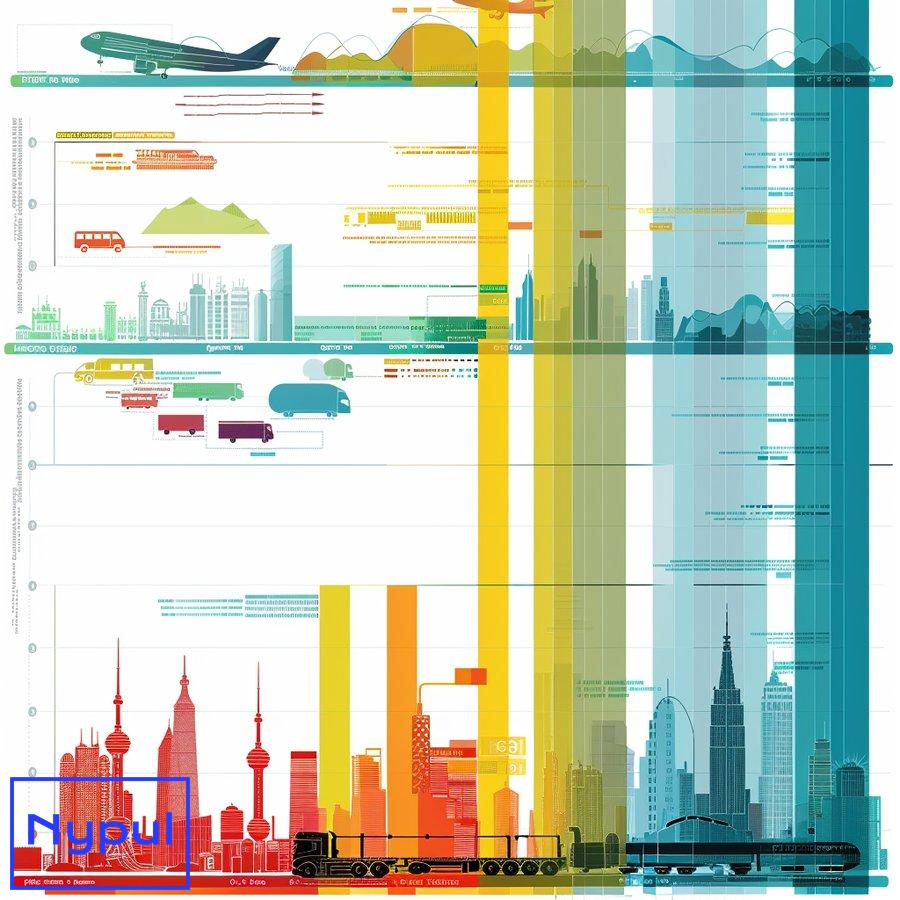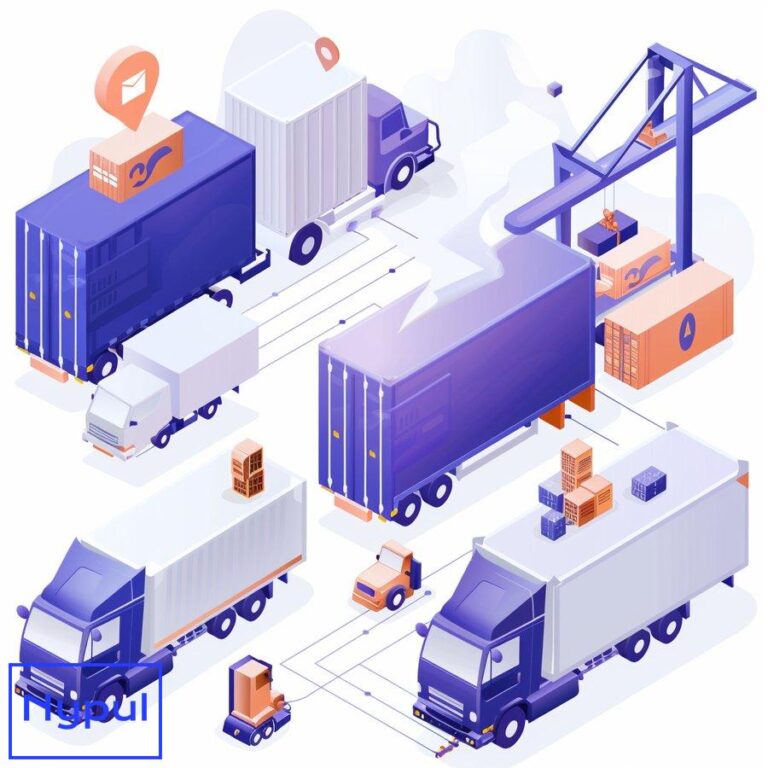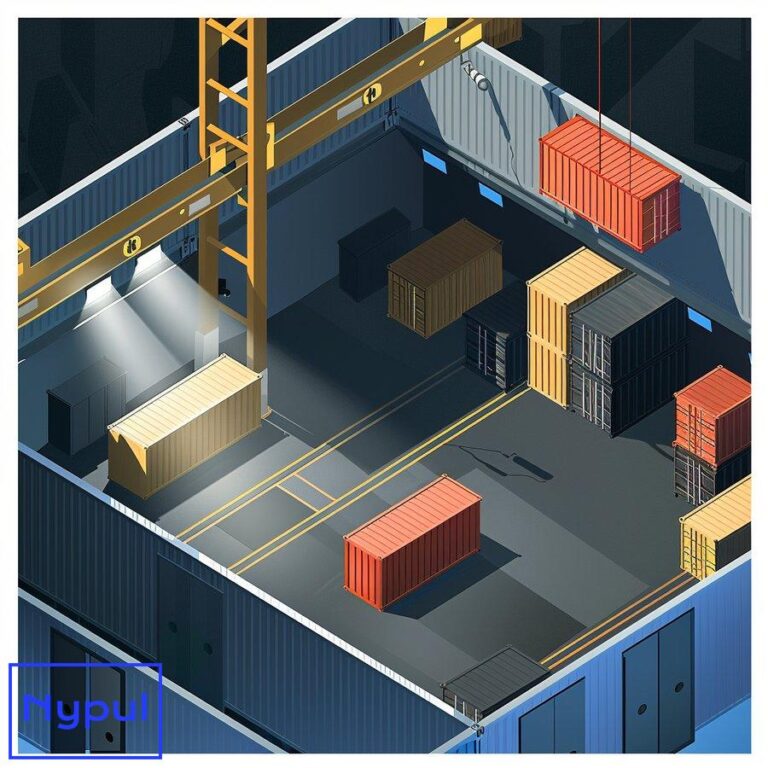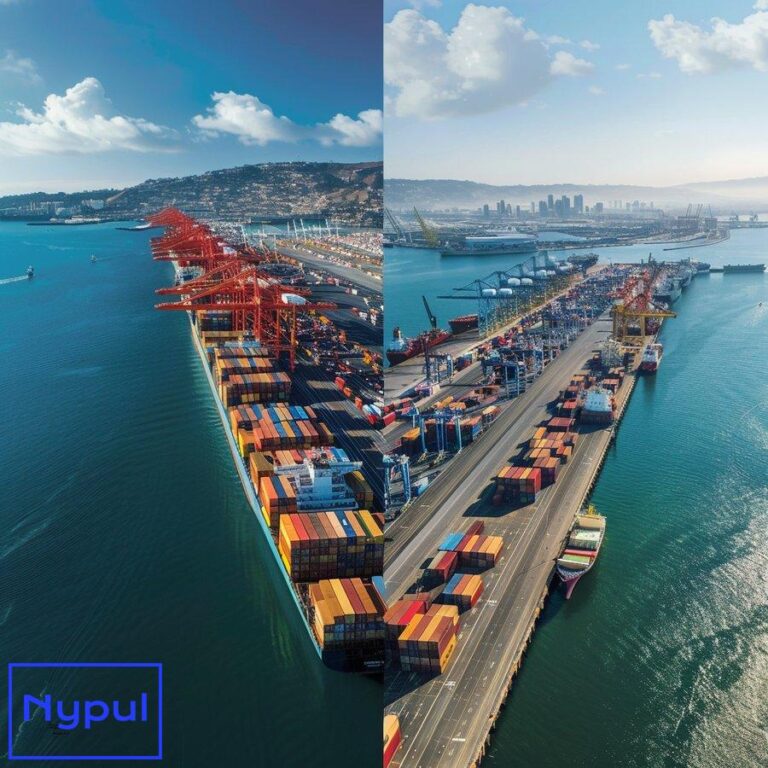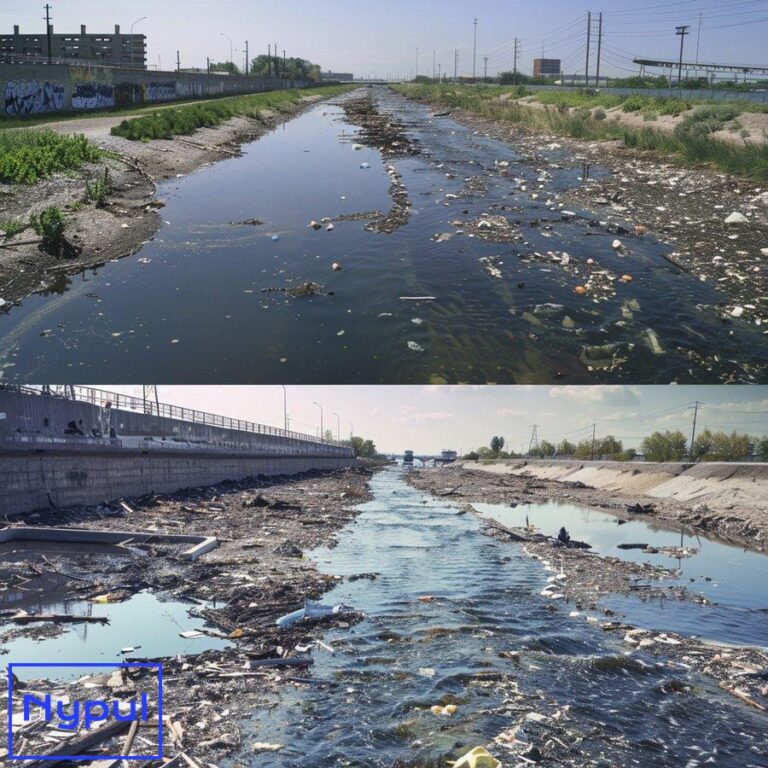What Are the Environmental Factors Affecting Transport Operations
How do climate change and extreme weather events affect transport operations?
Climate change significantly impacts transport operations by altering weather patterns and increasing the frequency of extreme weather events. These changes can lead to disruptions in logistics, affecting delivery schedules, operational costs, and overall supply chain efficiency.

Impact of Extreme Weather Events
Extreme weather events such as hurricanes, floods, and snowstorms can cause:
-
Disruptions to Infrastructure: Damage to roads, bridges, and ports can halt transportation routes. For instance, flooding can render roadways impassable, while hurricanes may lead to port closures.
-
Increased Operational Costs: Transport companies may incur higher costs due to rerouting, delays, and the need for additional resources. For example, fuel prices may rise as companies take longer routes to avoid affected areas.
-
Supply Chain Vulnerability: Disruptions can ripple through supply chains, leading to inventory shortages and increased lead times. Businesses relying on just-in-time inventory systems are particularly vulnerable.
Adaptation Strategies
To mitigate these impacts, transport companies are adopting various strategies:
-
Infrastructure Resilience: Investing in resilient infrastructure that can withstand extreme weather conditions is crucial. This includes reinforced bridges and flood-resistant roadways.
-
Flexible Routing Systems: Utilizing advanced routing technologies enables companies to adapt quickly to changing conditions, minimizing delays.
-
Risk Assessment Models: Implementing predictive analytics helps identify potential disruptions due to climate events, allowing for proactive measures.
What are the key air quality concerns in transportation logistics?
Air quality is a critical concern in transportation logistics due to emissions from vehicles and equipment. Poor air quality can have severe health implications for communities and contribute to environmental degradation.
Key Air Pollutants

The primary pollutants associated with transportation include:
-
Nitrogen Oxides (NOx): Emitted from combustion engines, NOx contributes to smog formation and respiratory problems.
-
Particulate Matter (PM): These tiny particles can penetrate deep into the lungs, causing cardiovascular issues and other health problems.
-
Volatile Organic Compounds (VOCs): Released from fuel combustion and certain materials, VOCs contribute to ozone formation and have various health effects.
Health Impacts
The health impacts of poor air quality are significant:
-
Respiratory Diseases: Increased rates of asthma, bronchitis, and other respiratory diseases are linked to high levels of air pollution.
-
Cardiovascular Issues: Long-term exposure to air pollutants can lead to heart disease and other serious health conditions.
Mitigation Measures
Transport companies are increasingly adopting measures to improve air quality:
-
Transitioning to Cleaner Fuels: Utilizing alternative fuels such as biodiesel or electric power reduces harmful emissions.
-
Implementing Emission Controls: Installing filters and catalytic converters on vehicles helps capture pollutants before they enter the atmosphere.
-
Encouraging Public Transportation: Promoting public transit options reduces the number of vehicles on the road, leading to lower overall emissions.
How does noise pollution impact transport operations and surrounding areas?
Noise pollution is an often-overlooked aspect of transport operations that can significantly affect both operational efficiency and community well-being.
Sources of Noise Pollution
Transport-related noise primarily originates from:
-
Road Traffic: Cars, trucks, and buses generate considerable noise through engine operation, tire friction, and aerodynamic drag.
-
Rail Transport: Trains produce noise from engines as well as vibrations from tracks.
-
Air Traffic: Aircraft noise during takeoff and landing poses challenges for nearby communities.
Impact on Communities
The effects of noise pollution on surrounding areas include:
-
Health Issues: Prolonged exposure to high noise levels is associated with stress-related illnesses, sleep disturbances, and hearing loss.
-
Reduced Quality of Life: Constant noise can lead to decreased property values and reduced enjoyment of outdoor spaces.
Mitigation Strategies
Transport operators are implementing several strategies to reduce noise pollution:
-
Use of Quieter Vehicles: Investing in electric or hybrid vehicles that operate more quietly than traditional combustion engines helps minimize noise levels.
-
Noise Barriers: Constructing barriers along highways or rail lines can help shield communities from excessive noise.
-
Regulating Operating Hours: Limiting transport operations during nighttime hours reduces disturbances for nearby residents.
What are the main causes of water and soil contamination in logistics?
![]()
Water and soil contamination in logistics primarily arise from operational practices that inadvertently introduce pollutants into the environment. Understanding these causes is essential for developing effective mitigation strategies.
Key Contaminants
The main sources of contamination include:
-
Fuel Spills: Accidental spills during loading or unloading processes can lead to significant soil and water pollution.
-
Waste Disposal Practices: Improper disposal of hazardous materials can contaminate soil and groundwater supplies.
-
Runoff from Facilities: Stormwater runoff from logistics facilities may carry pollutants into nearby water bodies if not properly managed.
Environmental Impact
The consequences of contamination are profound:
-
Ecosystem Damage: Pollutants can harm aquatic life and disrupt local ecosystems, leading to long-term environmental degradation.
-
Human Health Risks: Contaminated water supplies pose serious health risks for communities relying on these resources for drinking water or agriculture.
How does land use for transportation infrastructure affect natural habitats?
Land use for transportation infrastructure has significant implications for natural habitats. The construction of roads, railways, airports, and ports often leads to habitat fragmentation and loss of biodiversity.
Habitat Fragmentation
Transportation infrastructure often divides ecosystems into smaller patches:
-
Wildlife Barriers: Roads can act as barriers for wildlife movement, isolating populations and reducing genetic diversity.
-
Altered Migration Patterns: Infrastructure development may disrupt traditional migration routes for various species, impacting their survival rates.
Loss of Biodiversity
The conversion of natural land into transportation corridors leads to biodiversity loss:
-
Species Extinction Risks: Habitat destruction increases the risk of extinction for vulnerable species that cannot adapt or relocate.
-
Ecosystem Services Disruption: Healthy ecosystems provide essential services such as pollination and water filtration; their loss affects human well-being as well.
What role does resource consumption play in transport operations?
Resource consumption is a critical factor in transport operations that influences both economic viability and environmental sustainability.
Key Resources Consumed

Transport operations primarily consume:
-
Fossil Fuels: Diesel and gasoline remain the dominant energy sources for most transport modes but contribute significantly to greenhouse gas emissions.
-
Materials for Infrastructure Development: The construction of roads, bridges, and terminals requires vast amounts of raw materials such as concrete, steel, and asphalt.
-
Water Resources: Water is essential not only for vehicle operation but also for maintaining facilities such as ports or warehouses where cooling systems may be necessary.
How can waste generation be minimized in logistics activities?
Minimizing waste generation in logistics activities is crucial for enhancing sustainability.
*Strategies for Waste Reduction*
Several effective strategies include:
- Implementing Recycling Programs
- Encouraging recycling within facilities helps divert waste from landfills.
-
Collaborating with suppliers who prioritize recyclable packaging materials further reduces waste generation.
-
Optimizing Packaging
- Utilizing minimal packaging designs reduces material usage while ensuring product safety.
-
Exploring biodegradable packaging options supports environmental sustainability efforts.
-
Enhancing Inventory Management
- Implementing just-in-time inventory practices minimizes excess stock that may become obsolete.
-
Utilizing data analytics helps forecast demand accurately, reducing overproduction waste.
-
Training Employees
- Educating staff about waste reduction practices fosters a culture of sustainability within organizations.
-
Encouraging feedback from employees on waste management initiatives improves overall effectiveness.
-
Utilizing Technology
- Adopting digital tools for tracking shipments reduces paper waste associated with documentation.
- Implementing automated systems enhances efficiency while minimizing resource consumption.
What technological advancements are addressing environmental challenges in transport?
Technological advancements play a pivotal role in addressing environmental challenges within the transport sector. Innovations are being developed across various domains aimed at reducing emissions, improving efficiency, and enhancing sustainability practices.
*Innovative Technologies*
Several key advancements include:
- Electric Vehicles (EVs)
- The rise of electric trucks and vans significantly reduces reliance on fossil fuels.
-
EVs produce zero tailpipe emissions contributing positively towards improving air quality.
-
Autonomous Vehicles
- Autonomous driving technology optimizes fuel consumption through enhanced routing algorithms.
-
Reduced human error lowers accident rates leading to fewer disruptions in transport operations.
-
Telematics Systems
- Real-time tracking systems monitor vehicle performance providing insights into fuel efficiency.
-
Data analytics enables predictive maintenance reducing downtime while enhancing operational efficiency.
-
Alternative Fuels
- The development of biofuels derived from renewable resources offers a sustainable alternative to traditional fuels.
-
Hydrogen fuel cells present an exciting opportunity for zero-emission transport solutions.
-
Smart Infrastructure
- Integrating smart technologies into transportation infrastructure enhances traffic flow reducing congestion-related emissions.
- Intelligent traffic management systems optimize signal timings improving overall network efficiency.
How do environmental regulations shape modern transport operations?
Environmental regulations play a crucial role in shaping modern transport operations by establishing standards that promote sustainability while protecting public health.
*Key Regulations*
Several significant regulations influence transport practices:
- Clean Air Act (CAA)
-
Enforced by the U.S. Environmental Protection Agency (EPA), this act sets limits on air pollutants emitted by vehicles promoting cleaner technologies.
-
International Maritime Organization (IMO) Regulations
-
These regulations target greenhouse gas emissions from shipping vessels encouraging the adoption of cleaner fuels within maritime transport.
-
Corporate Average Fuel Economy (CAFE) Standards
- These standards require manufacturers to improve fuel efficiency across their fleets reducing overall greenhouse gas emissions associated with road transport.
What sustainable practices are being adopted in the transport industry?
Sustainable practices within the transport industry are gaining traction as organizations recognize the importance of minimizing their environmental impact while enhancing operational efficiency.
*Adoption Strategies*
Several sustainable practices include:
- Green Logistics Initiatives
-
Companies are implementing strategies focused on minimizing carbon footprints through optimized routing systems that reduce travel distances.
-
Sustainable Supply Chain Management
-
Collaborating with suppliers who prioritize sustainability ensures responsible sourcing throughout supply chains fostering circular economy principles.
-
Employee Engagement Programs
- Promoting eco-friendly commuting options encourages staff participation in sustainability initiatives leading by example within communities.
Through these comprehensive approaches addressing various environmental factors affecting transport operations—ranging from climate change impacts through technological advancements—stakeholders can work collaboratively towards creating a more sustainable future for logistics while safeguarding public health alongside ecological integrity.
